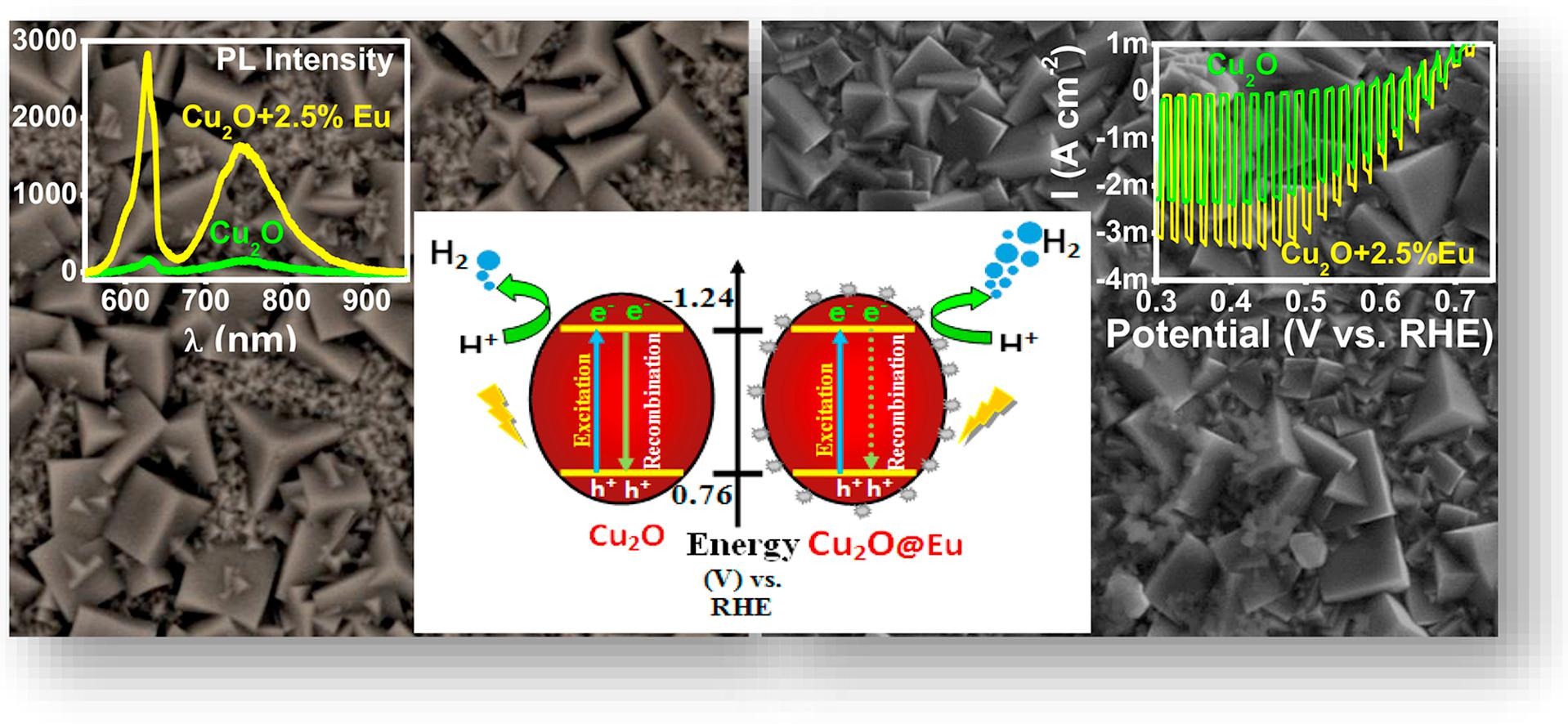Authors: S. Shyamala, P. Hajraa, H. Mandala, A. Bera, D. Sariket, A. Satpati, M. Malashchonak, A. Mazanik, O. Korolik, A. Kulak,, A. Maity, E. Streltsov, C. Bhattacharya

Chemical Engineering Journal, 2018, 335, pp 676-684
Abstract
We propose a simple way to increase incident photon-to-current conversion efficiency (IPCE, Y) for electrodeposited p-type Cu2O films through addition of Eu(III) to the electrodeposition bath. This is the first reported enhancement of photocurrent for Cu2O modified with a rare-earth element. Our study is based on hypothesis that a large ionic radius of Eu(III) promotes its precipitation in form of inclusions of another phase, which act as getter centers leading to purification of host material from detrimental impurities and, correspondingly, to increase in lifetime of non-equilibrium charge carriers. SEM, EDX and XRD analyses indicate that addition of Eu(III) results in some increase of Cu2O crystallite size and growth of a secondary Eu containing phase without changing the Cu2O lattice parameters. Electrochemical impedance spectroscopy indicates invariance of acceptor concentration and flat band potential for Eu modified films. Remarkable increase of charge carriers’ lifetime, which manifests in the growth of Cu2O exciton photoluminescence (PL) intensity and PL decay constant, leads to increased IPCE for the Eu modified films. Optimization of Eu(III) concentration in the electrodeposition bath allows attaining the cathodic photocurrent as high as 3.2 mA cm−2 (35 mW cm−2 Xe lamp illumination), which is as ≈40% greater than that for the pure Cu2O film and corresponds to Y ≈ 100% at wavelength λ < 450 nm.
DOI: 10.1016/j.cej.2017.11.004
Read full: